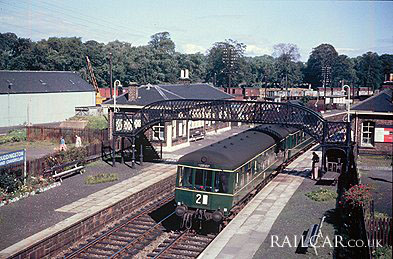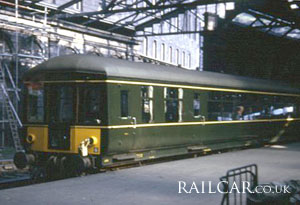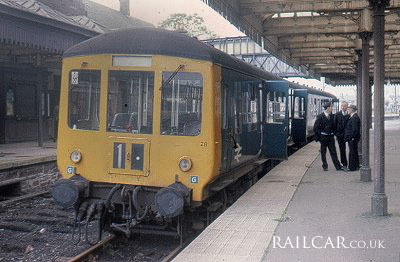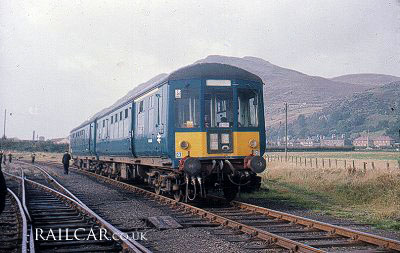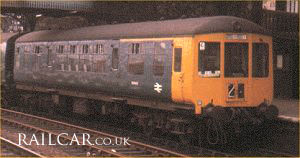Class 100 Gloucester RC&W 2-car DMUs
Liveries
The Green era
The sets were delivered in cream lined multiple-unit ("malachite") green, without whiskers. Buffers were black on a red buffer beam. The first image shows a set in its original livery, taken at Duddingston, a station on the Edinburgh suburban circular route. George Staddon.
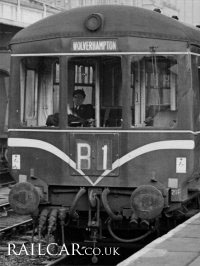
Whiskers seemed to be rather scarce (or I've just not got an even spread of photographs?). Also noteworthy in this picture is on the outer side of the buffers the shedcode is painted (21F).
The electrification warning flashes were on the lower cab front until late 1962 when they began to be moved to the top of the cab windows.
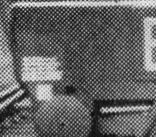
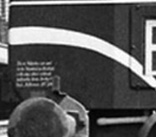
Auto gear fitted M50358 and partner (presumably M56113) had additional text on the cab end. The experiment ran roughly between 1958-62, before and during the whiskers period.
In the early 1960s small yellow panels were applied, but with the route indicator box staying green, and they would likely be repainted in loco ("brunswick") green at about this time.
The final image shows a set at Waverley circa 1965, recently painted into loco green with yellow panels. Tail lamps were carried as red bulbs were not fitted to the marker lights to allow them to be used as tail lights for some years. David Faircloth.
Circa 1966 first class stripes began appearing on Scottish sets. This example image contains three sets carrying the stripe, which looks more white than yellow.
The Blue era
From the late 1960s all over blue appeared, with full yellow ends, although a few had just a small yellow panel for a short time. Another short lived blue livery was painting the cab door yellow as well.
The first images shows the standard rail blue livery. Also note the early set no. (28) and the 'G' on the blue square. This was a Scottish variant on 'LW'. Stuart Rankin.
The second image shows the early version of blue livery with small yellow panels. The other characteristics of this were red buffer beams, brown underframe, smaller 3" high numerals, and the BR sign on the cab door. Stuart Rankin.
The final image shows another very short livery. The Gloucesters had a very large wrap round to the cab door as it was, without adding to it like this! Stuart Rankin
Livery Trials
Although none of the cars were ever refurbished, two DTCLs (E56315/7) withdrawn from Norwich were chosen to model trial liveries for refurbished cars. They were booked to move from Norwich to Wolverton Works on 7 March 1974[1].

At Wolverton each side of each car was painted differently. The secondman's side and front of 56315 was done in warning panel yellow, with black logo and numbering, and for obvious reasons there was no yellow stripe denoting 1st class. The opposite side was similar to the livery chosen, white sides with a band below window level, although in this case the band was an orange stripe, with a white logo on the band (as pictured right at Wolverton by Keith Gunner on April 7th 1974.

The numbering was in black below the stripe, and there was a yellow stripe for first class in the usual place. A blue stripe was also tried, but quite narrow and with the logo below, as pictured left by Ken Barnes at St. Rollox.

The other vehicle 56317 remained in plain blue on the secondman's side and had a yellow end, but on the drivers side was a plain red colour with white logo and yellow first class stripe. Numbering was either yellow or white. It can be seen at the rear of the second shot on the right, again by Keith Gunner at Wolverton on April 7th 1974. Pictures also appeared in Rail magazine, issue 193 (Feb 3-16 1993).
Others
E56315 didn't return to passenger traffic but in July 1974 it became part of the Fisons weedkiller train as FA 99900. It's yellow livery was partially kept, the lower side becoming brown, then later red, and finally in ran in green with a white waist band.
Another non-passenger set that carried it's own colours was the ER General Manager's "Stourton Saloon" (DB 975664 / 975637) which was painted into Provincial Blue in the mid-1980s.
References
- ⋏ p543 May 1974 Railway Observer (Railway Correspondence and Travel Society)
Summary
Orders
Construction
Description
GRC&W Ads & Works Pictures
BR Diagrams & Works Pics
Numbering & Driving Instructions
Liveries
Allocations
Operations - LMR
Operations - Scotland
Operations - NER/ER
Publicity - ScR Newspaper Ads
Non-Passenger Use
Fisons Weedkiller
Images
Also relevant:-
Edinburgh Suburban timetables
Details about the preserved Class 100 vehicles can be found here.



